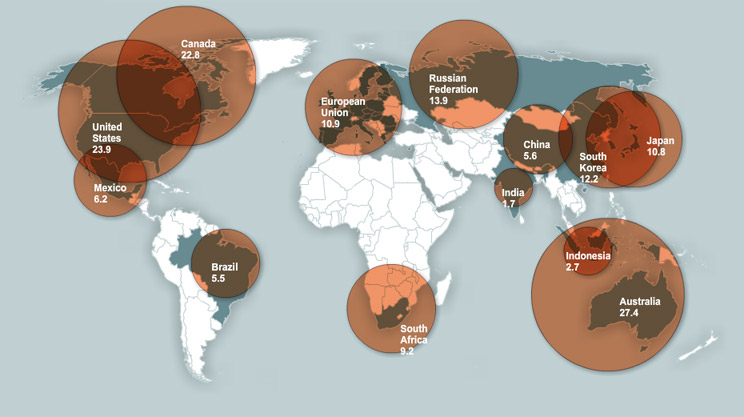
SUNITA NARAIN, director of CSE and editor of Down To Earth, an environmentalist pushing for changes in policies and practices and mindsets
The minister for environment and forests has announced his decision on Bt-brinjal – whether the world’s first genetically modified vegetable should be given permission to be grown and eaten in the country. And before I discuss the issues further, let me also make my own bias clear. I am not an anti-GM-person. In other words, I have no ideological problems with the use of genetically modified technology to improve crop yields. But I am anti-Bt-brinjal and believe the minister is right in not giving clearance.
My reasoning is as follows: first; this is a case of the first genetically modified vegetable: A common food of near daily use that is eaten in all our homes often uncooked. So, therefore, we cannot judge this vegetable at par with Bt-cotton, which is at most used as fodder or processed in the cottonseed oil we use. In fact, all other GM crops, used widely across the world are either eaten in processed form (like soya) or as after industrial refining (like corn or rapeseed oil). So simplistic correlations cannot be applied here that genetically modified crops are safe or known.
Second, the jury is out and arguing still about the tests that have been done to establish the safety of this gene-modified vegetable on our health. The debate centers around two issues: one, if enough has been done to study the chronic impact of eaten this daily use vegetable on our bodies and our health and two, who has done these studies.
The list of studies done by MAHYCO – the owner company – show that most studies have looked at acute toxicity – lethal dose 50 or more – the dose at which there would be mortality of 50 per cent or more. Or have conducted studies on allergic reactions and skin irritation. There are also studies on sub-chronic toxicity – 90 days on rats, rabbits and goats – and the question is if studies are good enough to understand the long-term impacts of ingesting Bt-brinjal. The company says yes, maintaining that 90 days of a rat are roughly equivalent to 20-21 years of humans. The opposing scientists say no, as chronic impacts need a different protocol of study.
Furthermore, there is the still open issue of how the Cry1Ac toxin breaks down in the food and in our bodies. The company says it has data to show that the protein breaks down in cooked food and in our digestive system, but admits it remains active in an alkaline medium. The opposing view is that brinjal is often eaten raw and that even our digestive system is mildly alkaline. The jury is arguing still as I said.
Then there is the big issue if you and I who will now eat this vegetable can ‘trust’ the research, which has largely been conducted by the company, which stands to gain the most if the go-ahead is given. Currently, we know that all research is funded by companies and then presented to the regulators for clearance. It is not surprising then that there is an enormous lack of credibility – people do not believe what they say has been done. And given the horrific and scandalous track record of private research misguiding policy in the case of drugs or food, why should this be surprising? It is clear that we need a new system: research must be publicly funded and openly scrutinized. The money must come from companies, but in the form of a cess collected into a fund.
My third reason for rejecting Bt-brinjal is more basic and fundamental. The fact is that I want the right to decide if I want to eat Bt-brinjal or not. But the country has no labeling system to distinguish the GM-hybrid from its more-lowly ordinary cousin. You and I will have no choice.
This is further complicated because labeling demands that the country must have a laboratory network and a functioning regulatory system, so that GM-content can be analyzed and told to consumers. This is far from the set up we have in the country. We tried to get edible oil checked for GM traces and were turned away by most laboratories in the country, because either they could not test or had such limited facilities that these were expensive and unavailable. So, once again we want the ‘modern’ technology without the ‘modern’ facilities to ensure safety and regulation. A deadly combination.
Over and above this there are concerns about what this ‘foreign’ introduction will do to the biodiversity brinjal in the country – we are the centre of origin of this vegetable, which has over 2500 varieties grown in the country. While the company scientists say that the Bt-brinjal will not contaminate other varieties, research also shows that cross-pollination is definitely possible in this vegetable. Can we take the risk or losing these varieties – long, short, round or twisted - on our table?
To me the outcome is clear: Bt-brinjal is not worth the risk and uncertainty it presents. This is not a verdict on GM crops. It is a verdict on a vegetable that we want our choice to eat or not to eat. The Minister’s decision must be supported.








